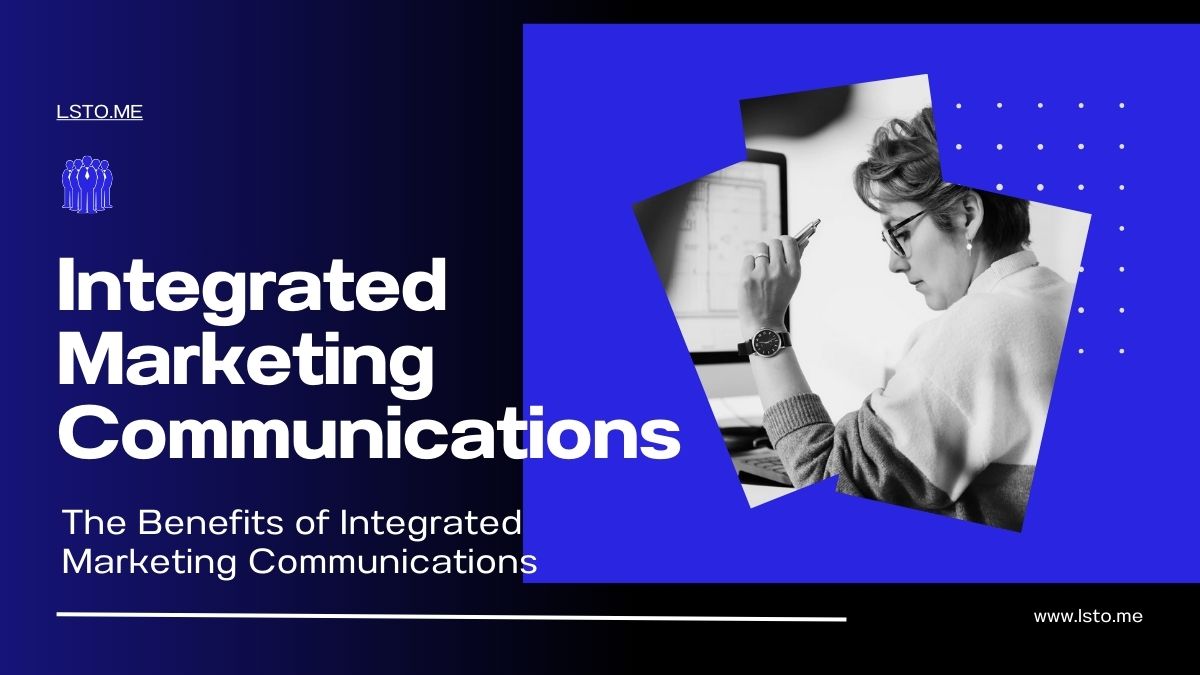
Businesses must find ways to stand out and connect with their target audiences. Integrated Marketing Communications (IMC) is a strategy that uses various channels and marketing tactics. The goal is to deliver a consistent, unified message. By integrating their marketing efforts, businesses can achieve greater synergy. This will enhance brand visibility and drive better results. This blog post will explore the many benefits of Integrated Marketing Communications and how it can elevate your marketing strategy.
What is Integrated Marketing Communications?
Understanding IMC
Integrated Marketing Communications means coordinating and integrating various marketing tools and channels. This delivers a consistent, cohesive message to the target audience. IMC aims for all communications to work together. This includes ads, PR, sales promotions, digital marketing, and social media. They should all reinforce the brand message and achieve marketing goals.
Key Components of IMC
- Advertising: Paid promotions through various media channels such as TV, radio, print, and digital platforms.
- Public Relations: Managing the brand’s reputation and building relationships with the media and the public.
- Sales Promotions: Short-term incentives to encourage immediate purchase or engagement.
- Direct Marketing: Targeted communications directly to consumers through methods like email, direct mail, and telemarketing.
- Social Media Marketing: Engaging with audiences through platforms like Facebook, Instagram, Twitter, and LinkedIn.
- Content Marketing: Creating and distributing valuable content to attract and retain a target audience.
- Event Marketing: Organizing and participating in events to promote the brand and engage with consumers.
The Benefits of Integrated Marketing Communications
1. Consistent Brand Messaging
A key benefit of IMC is a consistent brand message across all channels. Consistency strengthens the brand’s identity and values. It helps consumers recognize and remember the brand. Aligned marketing efforts create a clear, unified message. This reduces confusion and boosts brand credibility.
2. Enhanced Customer Experience
IMC enhances the customer experience by making brand interactions seamless and cohesive. A customer may find the brand via a social media ad, a promo email, or a TV ad. They get the same message and experience in each case. This consistency improves the customer experience, making it more positive and memorable. As a result, it boosts satisfaction and loyalty.
3. Increased Brand Awareness
IMC integrates various marketing channels and tactics, helping to amplify the brand’s presence and reach a wider audience. A cohesive strategy reinforces the brand message across multiple touchpoints. This boosts brand recall and recognition. The combined impact of different channels can significantly boost brand awareness and visibility.
4. Improved Marketing Efficiency
IMC improves marketing efficiency by cutting waste and using resources effectively. Coordinating all marketing activities reduces overlap and duplication. This makes better use of the marketing budget and resources, and also streamlines the marketing team’s workflow.
5. Better Measurement and Analysis
An integrated approach to marketing allows for better measurement of campaigns. Tracking and analyzing data from various channels provides a comprehensive view of marketing performance. This holistic view enables more informed decision-making and helps identify areas for improvement.
6. Increased ROI
IMC can improve ROI by maximizing marketing’s impact. By using a single message across multiple channels, businesses can improve their campaigns and achieve better results. Better integrated marketing boosts efficiency and effectiveness, leading to higher ROI.
7. Stronger Brand Equity
A consistent and integrated approach to marketing helps build and strengthen brand equity. A cohesive, reliable brand boosts consumer trust and positive feelings. Strong brand equity enhances brand loyalty, raises customer retention, and provides a market edge.
8. Enhanced Competitive Advantage
In a crowded marketplace, differentiation is key to gaining a competitive edge. IMC helps businesses stand out by delivering a unique, compelling brand message that resonates with the target audience. A strong brand can help businesses attract customers and outperform competitors. Integrating marketing efforts creates that strong brand.
9. Greater Flexibility and Adaptability
IMC provides businesses with more flexibility to respond to market changes and consumer preferences. By using multiple communication channels, businesses can quickly adapt their marketing strategies to new trends, opportunities, or challenges. This agility helps businesses stay relevant and maintain a competitive edge.
10. Strengthened Brand Loyalty
Consistent and integrated marketing efforts contribute to stronger brand loyalty. A consistent message and experience at all touchpoints help brands build a stronger connection with customers. This connection fosters loyalty and encourages repeat purchases, leading to long-term customer relationships.
How to Implement Integrated Marketing Communications
1. Define Your Brand’s Core Message
The foundation of IMC is a clear and consistent brand message. Start by defining your brand’s core message, values, and positioning. All marketing communications must reflect this message and align with your brand strategy.
2. Identify Your Target Audience
Understanding your target audience is crucial for developing effective marketing strategies. Identify your audience’s demographics, interests, behaviors, and preferences. Use this information to shape your messaging and choose the best channels to reach your audience.
3. Develop a Comprehensive Marketing Plan
Create a marketing plan that details your objectives, target audience, messaging, and tactics. Align all marketing channels and activities with your brand message and goals. A well-developed plan provides a roadmap for implementing IMC and achieving desired outcomes.
4. Coordinate Marketing Efforts
Ensure that all marketing efforts are coordinated and integrated. This includes aligning messaging, visuals, and branding across different channels and touchpoints. Work with your marketing team and external partners to ensure a consistent approach.
5. Monitor and Analyze Performance
Regularly monitor and analyze the performance of your marketing activities. Track key metrics such as engagement, reach, conversions, and ROI. Use this data to assess your marketing efforts and make necessary adjustments.
6. Adjust and Optimize Your Strategy
Based on your performance analysis, make data-driven adjustments to your marketing strategy. Optimize your messaging, tactics, and channels to improve results and meet your marketing goals. Continuous improvement is essential for maintaining the effectiveness of your IMC efforts.
Conclusion
Integrated Marketing Communications is a powerful approach that can greatly enhance your marketing efforts. By delivering a consistent message across multiple channels, businesses can boost brand visibility, customer experience, and overall results. IMC improves brand awareness, ROI, and more. It builds brand equity, provides a competitive edge, and strengthens customer loyalty.
Implementing IMC requires careful planning, coordination, and analysis. However, the rewards are significant. Integrate your marketing communications and align all efforts with your brand’s core message. This will create a more cohesive, effective marketing strategy and drive success and growth for your business.
Start integrating your marketing communications today and unlock the full potential of a unified, strategic approach to engaging your audience.




